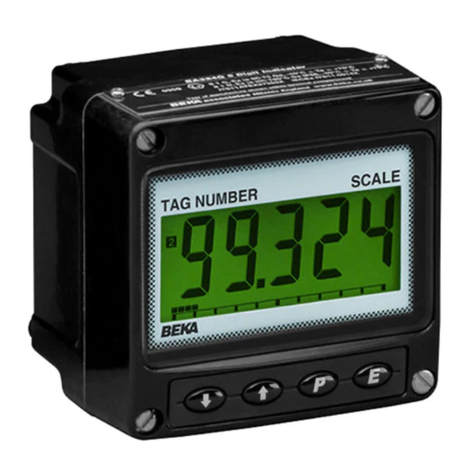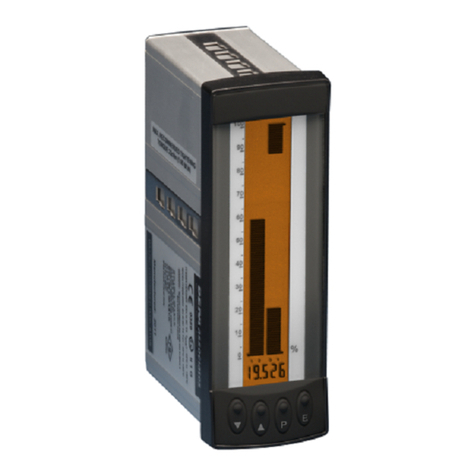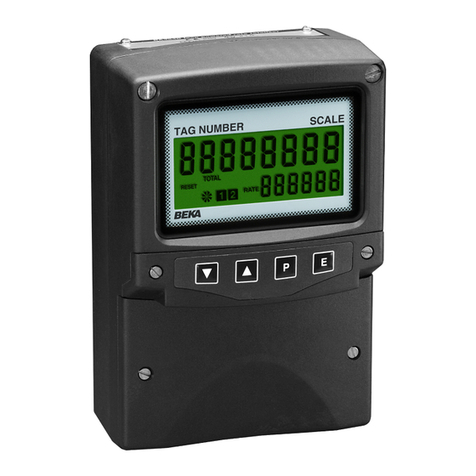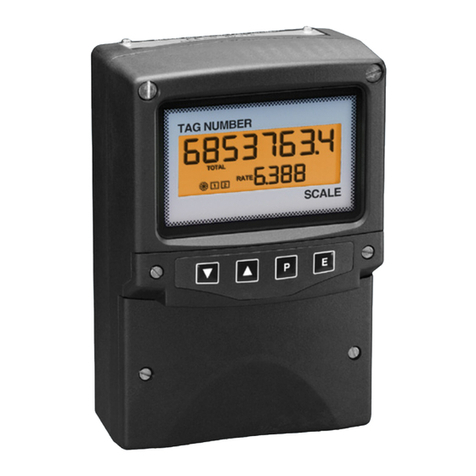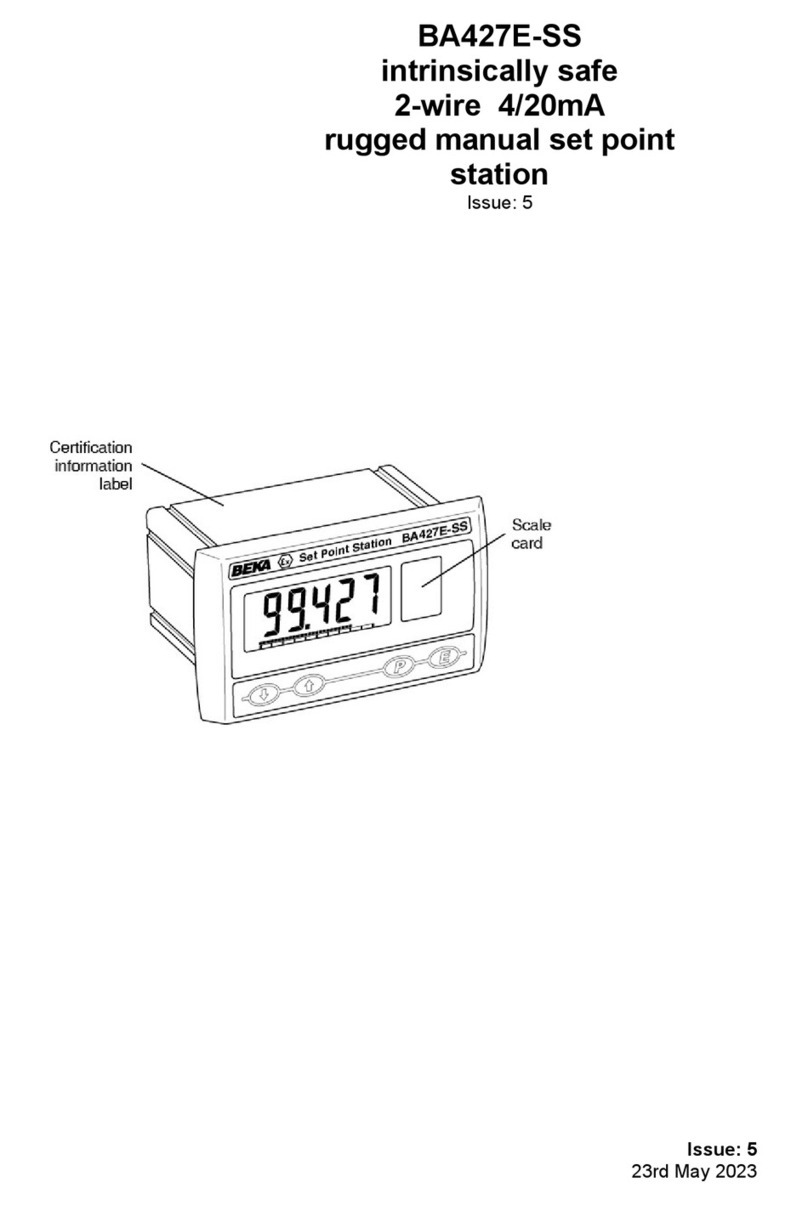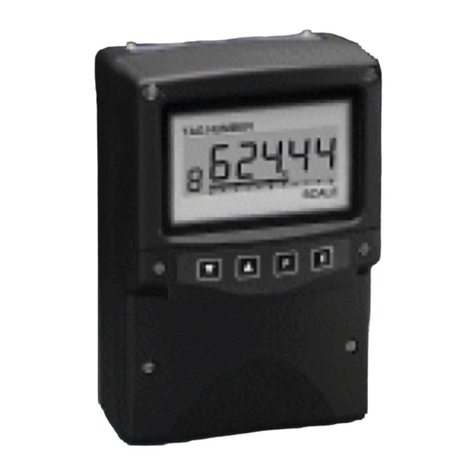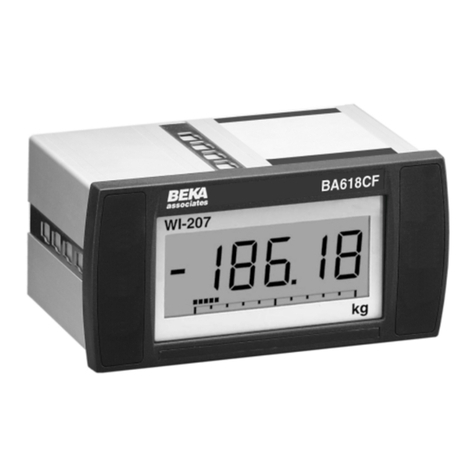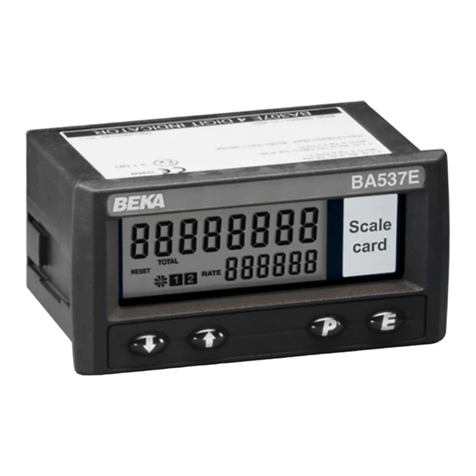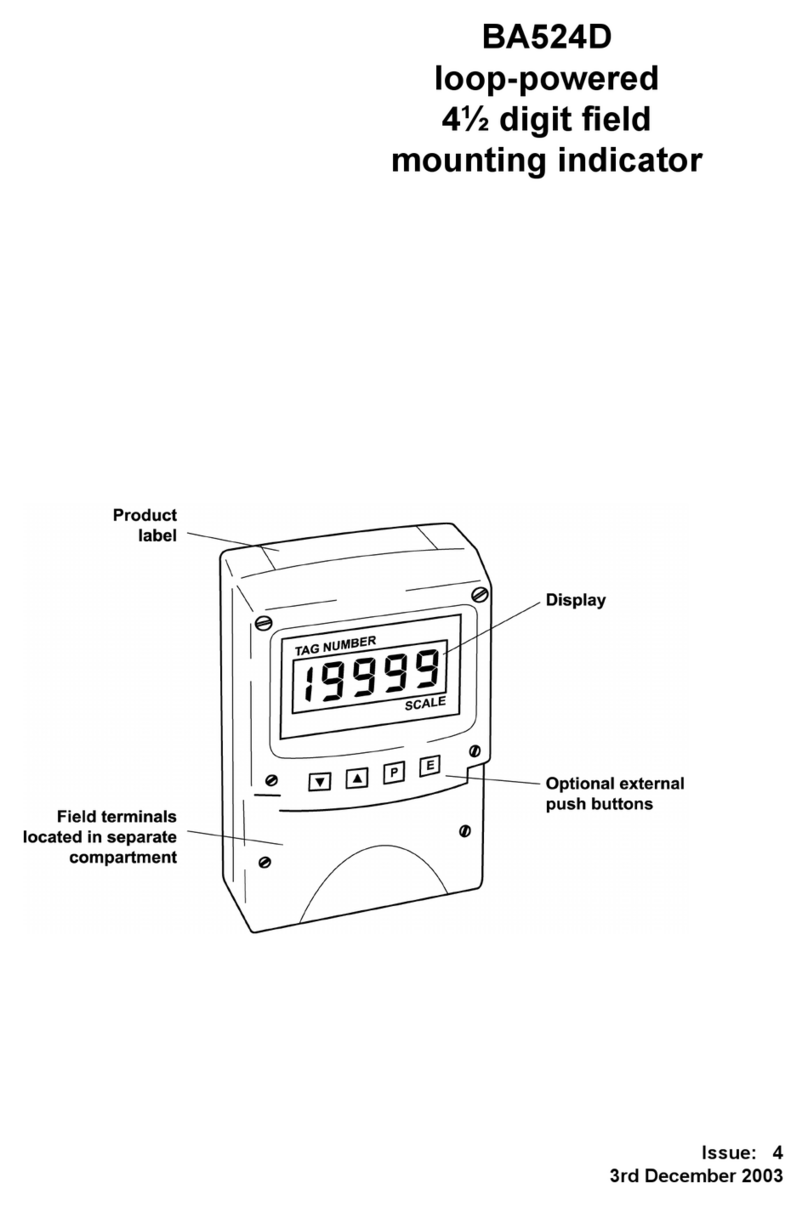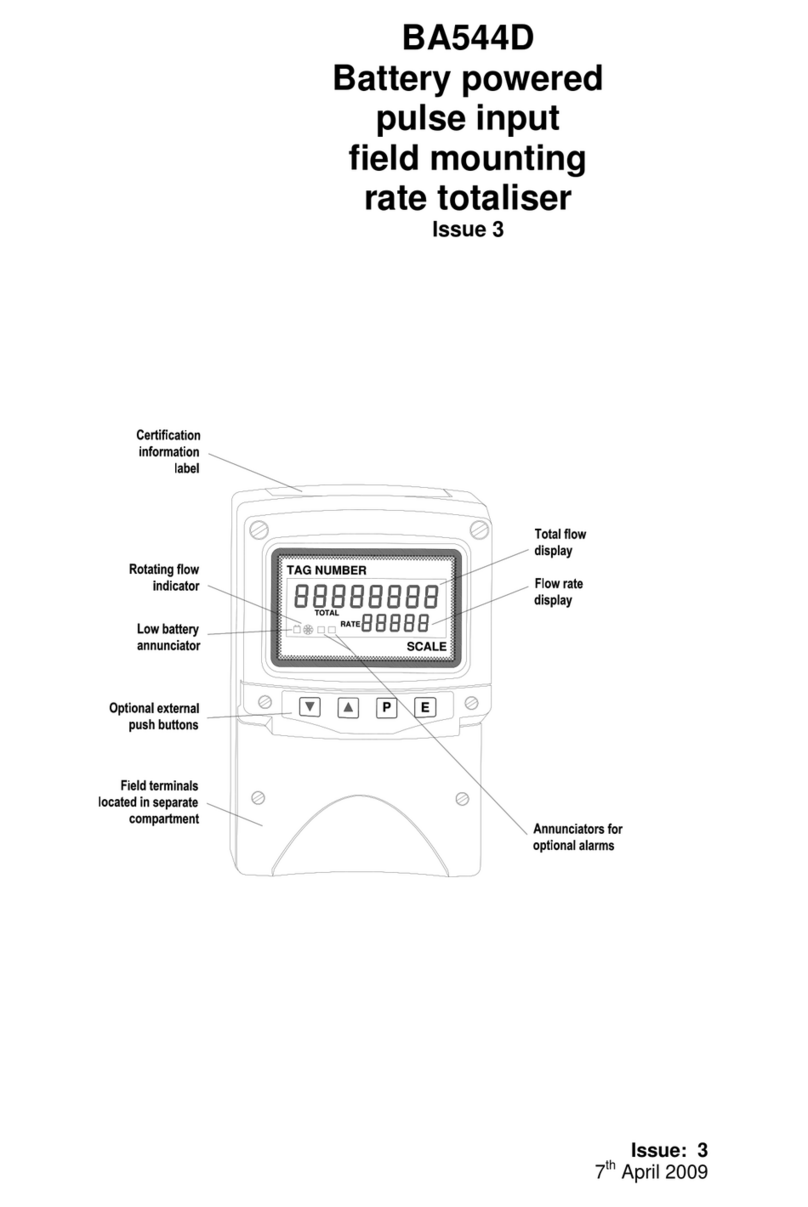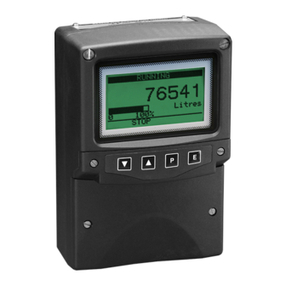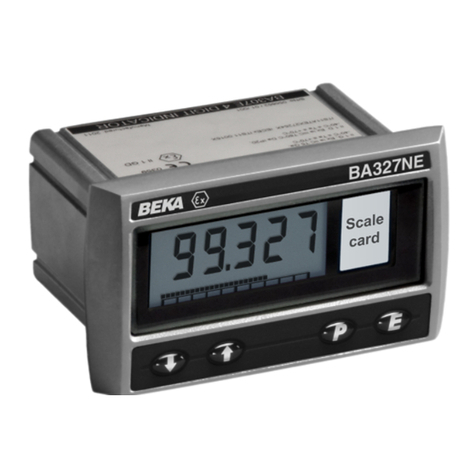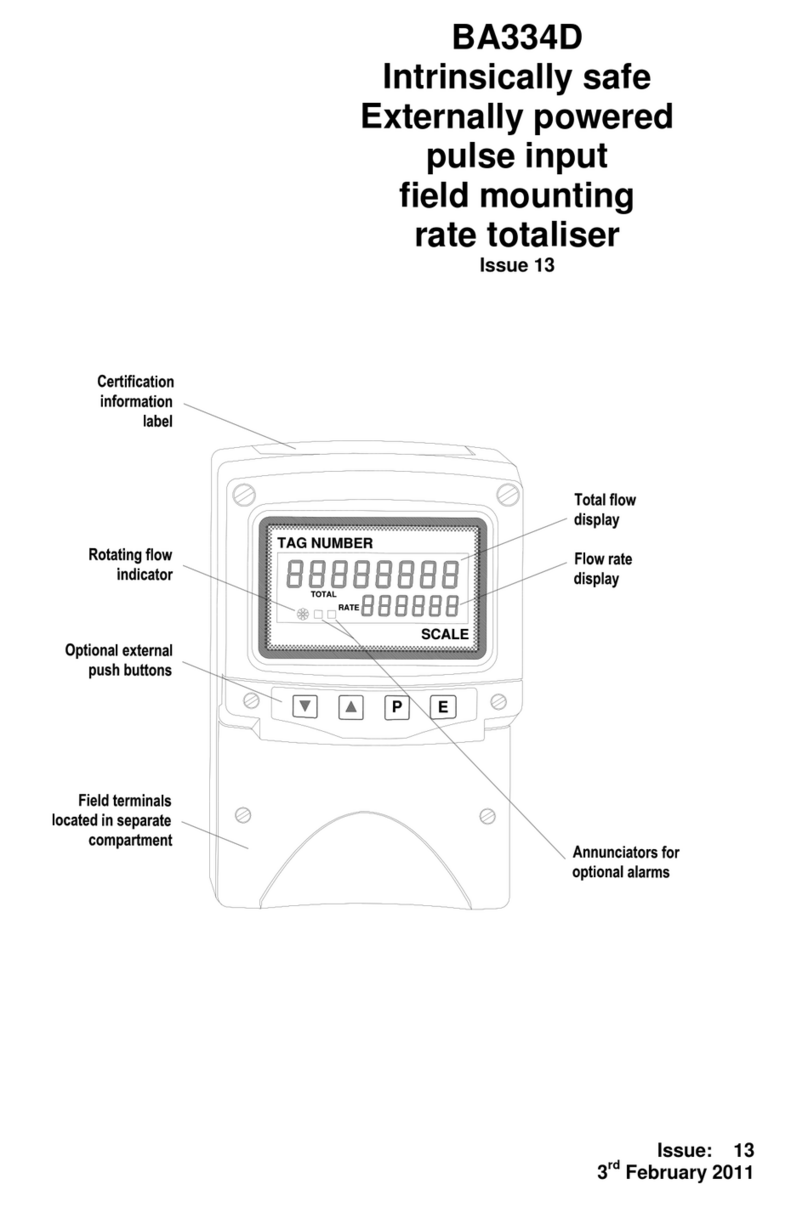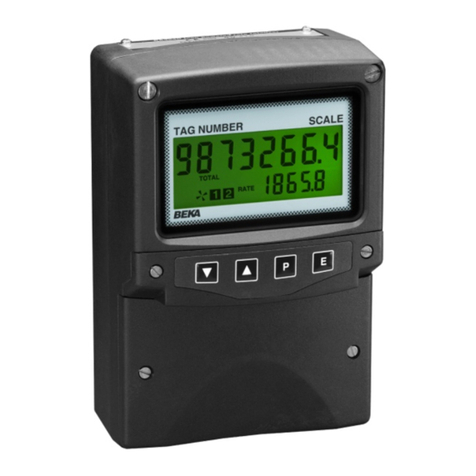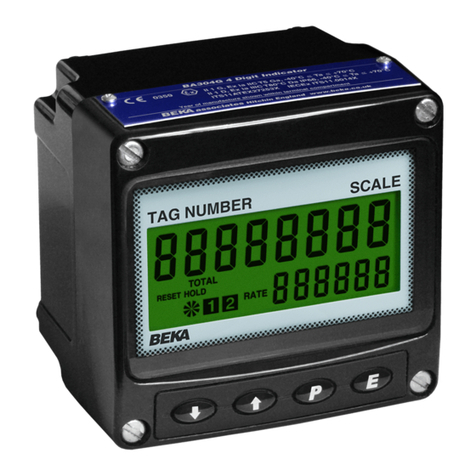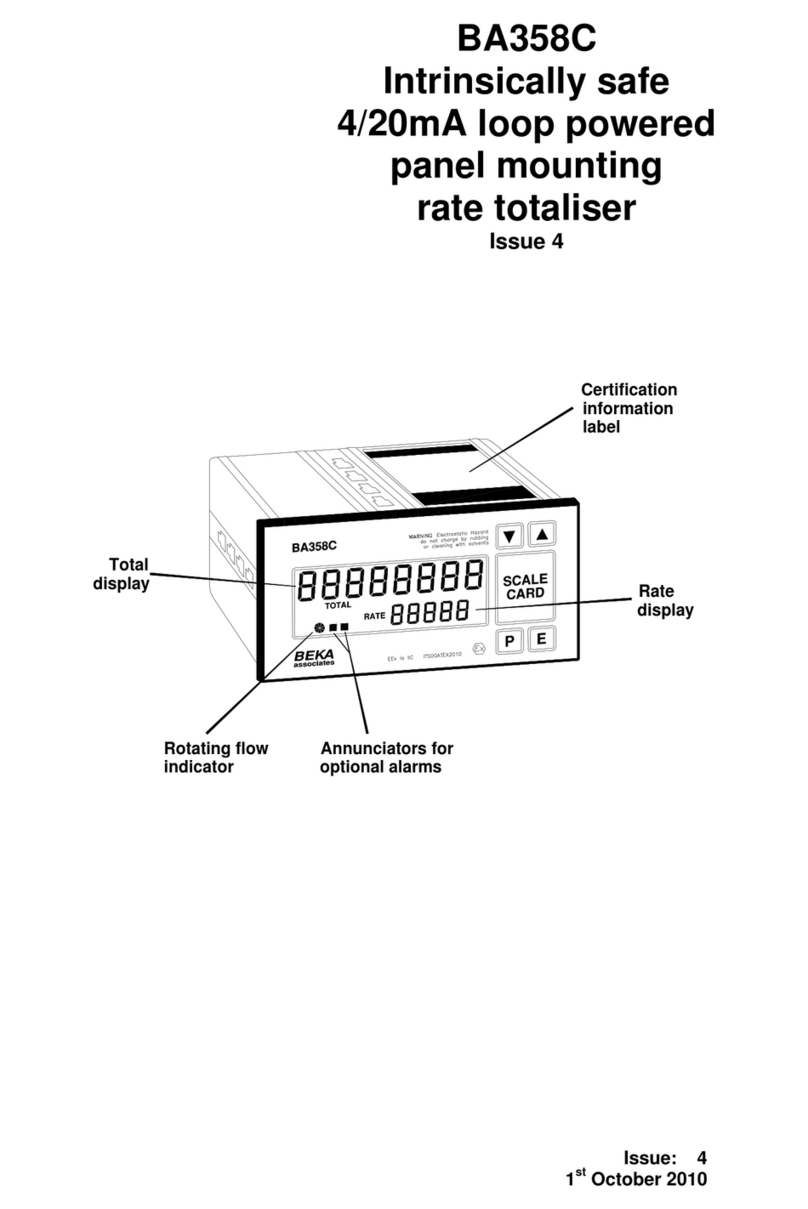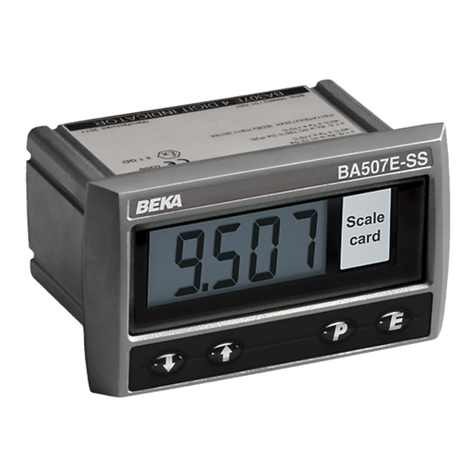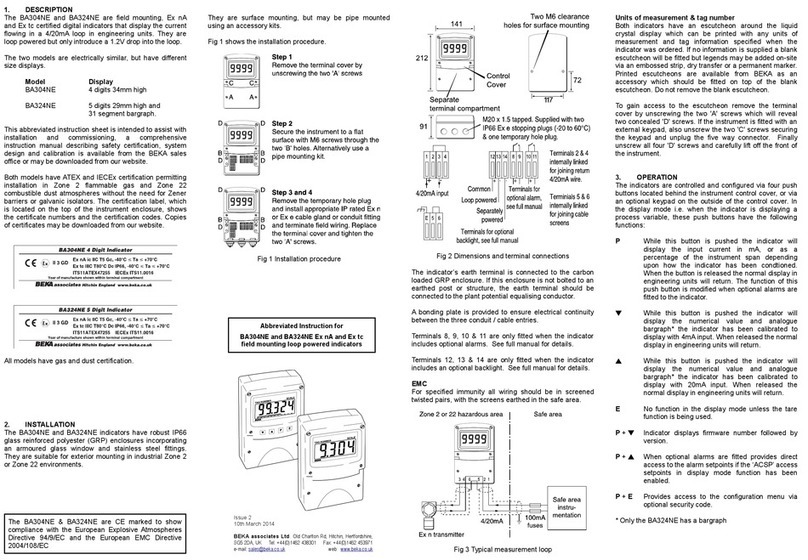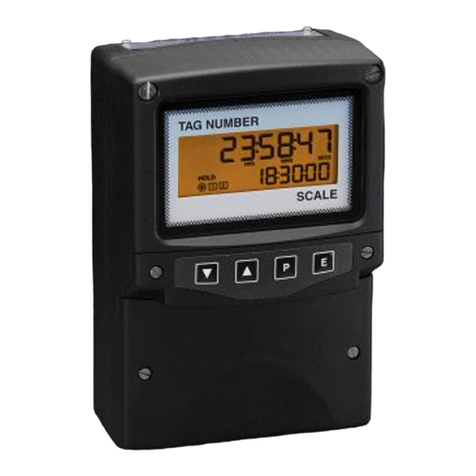
2.1 Initialisation
Each time power is applied to a Tachometer
initialisation is performed. After a short delay the
following display sequence occurs:
All segments of the display are activated
Tachometer starts functioning, using the
configuration information stored in the
instrument’s permanent memory. Unless the
run-time display has been reset to zero, new
elapsed time will be added to the existing
run-time total.
2.2 Controls
The BA514G is controlled and configured via four
front panel push buttons. In the display mode i.e.
when the instrument is displaying speed the push
button functions are:
Push Button Functions
& + * Resets run-time display to zero.
This is a configurable function.
See 5.15
)
+ *Run-time grand total.
If buttons are pressed for ten seconds or
longer grand total run-time is reset to
zero. This is a configurable function.
See 5.16
(+ &Shows in succession, firmware version
number, instrument function tacho and
any output accessories that are fitted:
- A Dual alarm outputs
- P Pulse output (Always fitted)
- C 4/20mA output
( + )Access to configuration menu
Note: When optional alarms are fitted, the
Tachometer may be configured to provide direct
access to the alarm setpoints from the display mode
when the (and *buttons are operated
simultaneously.
See 8.4.12 and 8.4.13
2.3 Displays
The BA514G has two digital displays and associated
annunciators, plus a pulse input indicator as shown
on the front cover of this manual.
Speed On upper eight digit display
display
Run-time On lower six digit display.
display Shows time in hours, with a
resolution of 0.1 hours, that
monitored machinery has been
operating. May be turned off.
See 5.8
Pulse input This disc in the lower left hand
indicator corner of the display 'rotates'
for two seconds each time an
input pulse is received.
Appears to rotate continuously
when input frequency exceeds
0.5Hz.
Hold Activated when input frequency
annunciator is below the clip-off threshold at
which the run-time timer stops
functioning.
Reset Activated while run-time display
annunciator is being reset to zero.
Grand total Activated while run-time grand
annunciator total which is shown in hours is
being displayed.
RTx Retransmitted pulse
annunciator annunciator.
Depends upon the setting of
5ource in the pulse output
configuration menu.
5caled:
Annunciator activated each
time pulse output open
collector is on, i.e. Ron is
less than 60+ 3V.
direct:
Annunciator continuously
activated.
6
